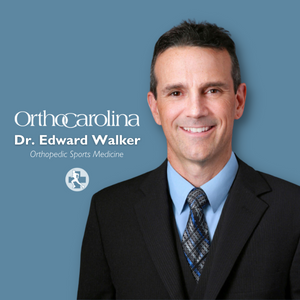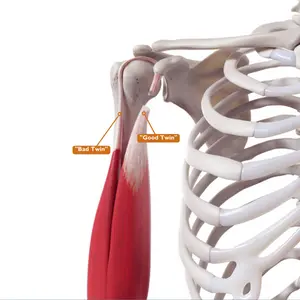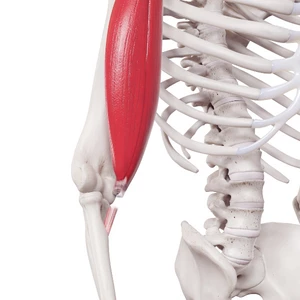
If you've scrolled YouTube Shorts, Instagram Reels, or even TikTok, we're guessing you've experienced at least one video on your For You Page where biceps curls have gone wrong, probably paired with the audio of "Oh no no no no no".
We know you have questions, specifically these:
- What exactly happened here?
- What do I do if this happens to me or someone I care about?
- How do I prevent this from happening?
That's exactly what we'll be discussing in this article, alongside expert input from Dr. Edward Walker, Orthopedic Sports Medicine specialist at OrthoCarolina.
Anatomy of the upper arm: Biceps Musculature
The biceps muscle is one of the beach muscles about the arm that are exercised frequently so that we can look good in tank tops during the warmer months. Contrary to popular belief, the biceps is not the major flexor of the elbow. Rather the biceps is primarily used to turn our palms up (supination) as if we are holding a bowl of soup.

What is a Tendon?
A tendon is a cord of strong, flexible tissue, like a rope, which connects your muscles to your bones. When you flex a muscle, the associated tendons then move the attached bone. Tendons are key in preventing muscle injury by absorbing some of the impacts your muscles take when you run, jump or do other movements.The Biceps Tendon has 3 sites where it attaches the muscle to the bone:
- 2 attachments, proximally, at the shoulder
- 1 attachment, distally, at the elbow.
Pro Tip: Knowing the signs and symptoms of which side of the tendon (shoulder side or elbow side) has been injured is significantly helpful when booking your appointment with an orthopedic specialist.

Biceps Tendon: Proximal, "Good Twin" & "Bad Twin"
The biceps tendon has two attachment sites about the shoulder (proximal) in front of the shoulder (short head) and one in the shoulder joint (long head). These attachment sites can be thought of as “good twin” (short head) and “bad twin” (long head).The “bad twin” often causes pain in the shoulder and commonly ruptures. If the “bad twin” ruptures the “good twin” is still attached so there is no need for surgery. However, when the “bad twin” ruptures there will be bruising about the shoulder and a Popeye Deformity.

Biceps Tendon: Distal
There is one attachment of the biceps about the elbow (distal). When the biceps tendon attachment at the elbow ruptures there may be bruising and a resulting Reverse Popeye Deformity. When the biceps tendon ruptures at this site a surgical repair may be considered. If the biceps tendon is not repaired there may be a decrease in strength with turning the palm up and with flexing the elbow. If surgery is to be considered it should be done urgently (within a couple of weeks) as it is much more difficult to repair in a delayed fashion.
Identify your symptoms:
- Proximal Biceps Tendon Tear "Bad Twin" symptoms: bruising about the shoulder, pop-eye deformity (bicep has retracted down towards elbow)
- Distal Biceps Tendon Tear: reverse pop-eye deformity (bicep has retracted up towards shoulder), reduced strength when turning the palm up with flexing the elbow.

How to limit risk for bicep tendon rupture
If you want to limit your risk for a tendon rupture, here are a few recommendations from Dr. Edward Walker, MD:
- Do not smoke cigarettes -- Smoking decreases blood flow, tendons already do not have great blood flow - let's set the healing up for success by helping the blood flow to the tendon as much as possible.
- Lift weights with care -- Slow, controlled, elbow flexion with objects of reasonable weight is the best way to avoid injury.
Expert(s) referenced: Dr. Edward Walker, OrthoCarolina Sports Medicine Specialist This information is provided as an educational service and is not intended to serve as medical advice. If you are seeking specific orthopedic advice or assistance, please consult with your OrthoCarolina physician or locate one in your area through OrthoCarolina’s website at www.OrthoCarolina.com.
Back




Leave a Comment